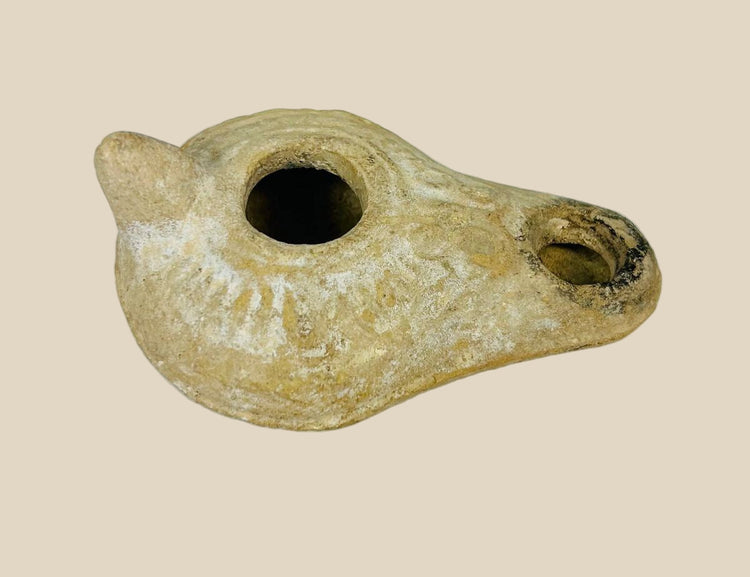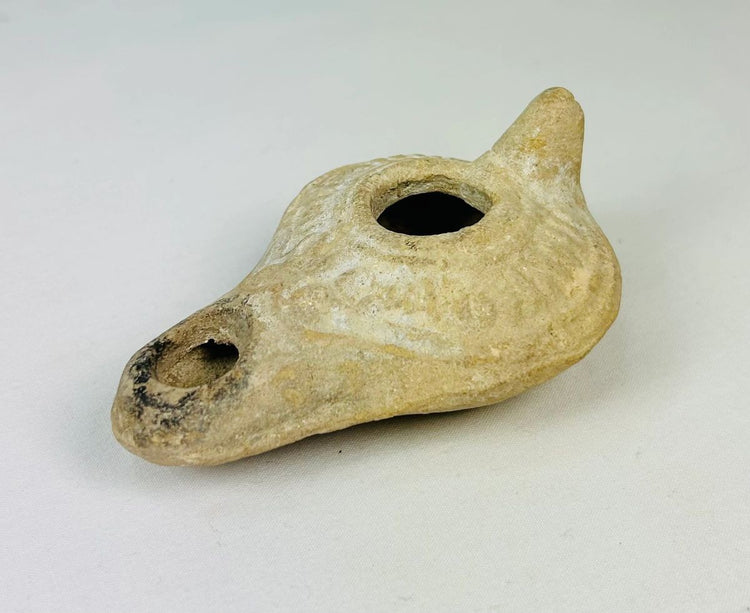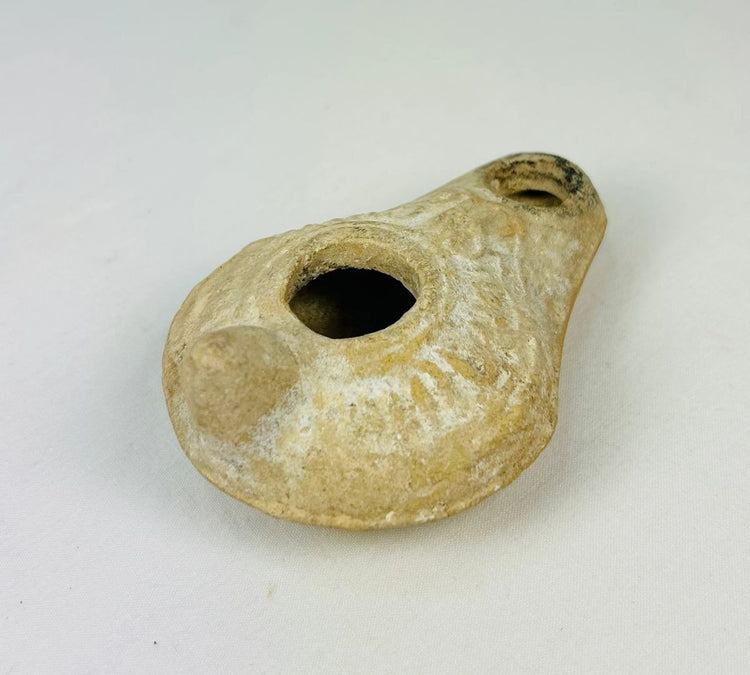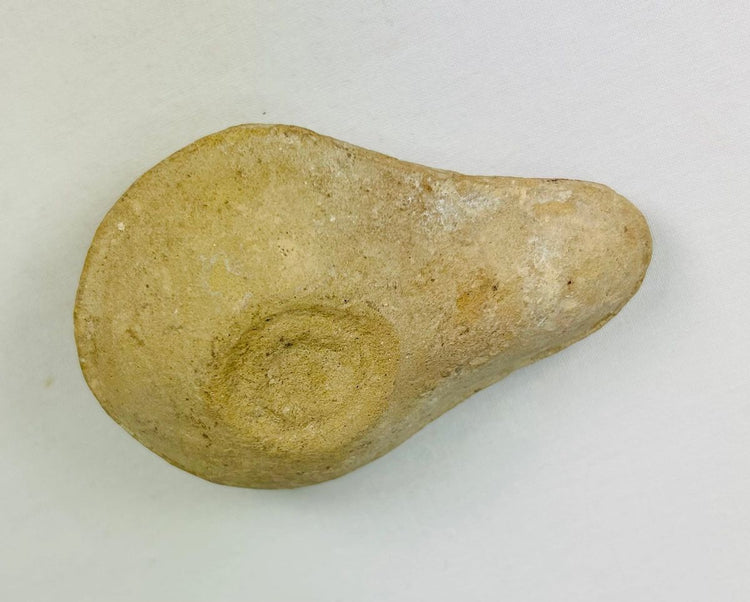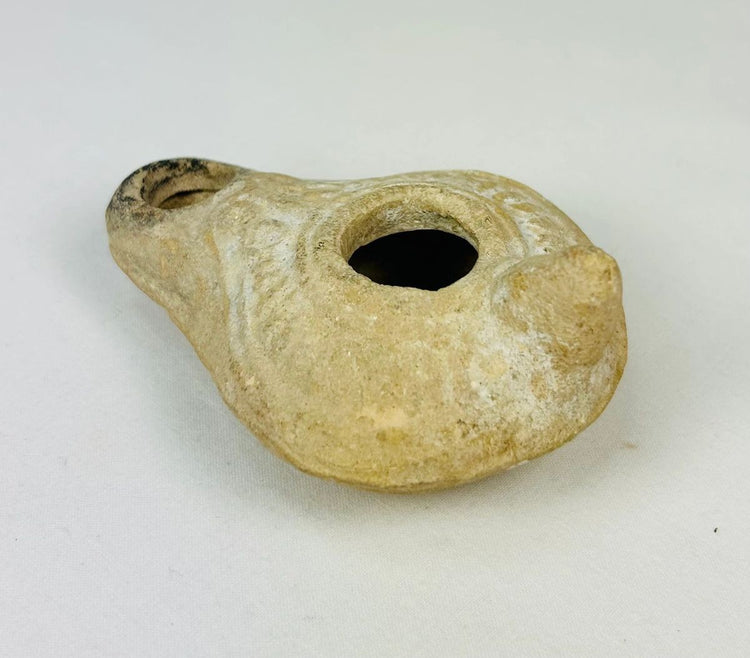Ancient Roman Terracotta Oil Lamp | Mediterranean Daily Life Artifact | 1st–3rd Century CE
Description
More
Less
Historical Context & Origin
Region: Roman Empire, Mediterranean Region
Material: Terracotta
Period: 1st–3rd Century CE
Description
This terracotta oil lamp is a fine example of daily life in the Roman Empire, dating between the 1st and 3rd centuries CE. Oil lamps were indispensable to Roman households, serving both practical and ceremonial purposes. This piece reflects the cultural importance of light in ancient society, bridging the domestic, spiritual, and artistic aspects of Roman life.
Features
- Functional design with nozzle for wick and central filling hole
- Subtle decorative elements enhancing its utilitarian form
- Usage marks, including blackened areas near the nozzle, attesting to its active use in antiquity
- Compact, portable size ideal for household and ritual settings
Cultural Significance
Roman oil lamps were a vital element of daily living, providing illumination for reading, cooking, and social gatherings. Beyond their domestic role, lamps often carried spiritual significance, used in temples and household shrines for offerings and rituals. This lamp, with its signs of authentic use, embodies the intersection of Roman practicality and devotion, serving as a tangible link to everyday life in the ancient world.
Condition
The lamp exhibits natural wear consistent with its age, including surface weathering and soot marks from use. Despite this, it remains structurally intact, with its form and decorative accents clearly visible. These features enhance its authenticity and historical value.
Dimensions (approximate)
Length: 3 in
Age
Circa 1st–3rd Century CE
Description
Historical Context & Origin
Region: Roman Empire, Mediterranean Region
Material: Terracotta
Period: 1st–3rd Century CE
Description
This terracotta oil lamp is a fine example of daily life in the Roman Empire, dating between the 1st and 3rd centuries CE. Oil lamps were indispensable to Roman households, serving both practical and ceremonial purposes. This piece reflects the cultural importance of light in ancient society, bridging the domestic, spiritual, and artistic aspects of Roman life.
Features
- Functional design with nozzle for wick and central filling hole
- Subtle decorative elements enhancing its utilitarian form
- Usage marks, including blackened areas near the nozzle, attesting to its active use in antiquity
- Compact, portable size ideal for household and ritual settings
Cultural Significance
Roman oil lamps were a vital element of daily living, providing illumination for reading, cooking, and social gatherings. Beyond their domestic role, lamps often carried spiritual significance, used in temples and household shrines for offerings and rituals. This lamp, with its signs of authentic use, embodies the intersection of Roman practicality and devotion, serving as a tangible link to everyday life in the ancient world.
Condition
The lamp exhibits natural wear consistent with its age, including surface weathering and soot marks from use. Despite this, it remains structurally intact, with its form and decorative accents clearly visible. These features enhance its authenticity and historical value.
Dimensions (approximate)
Length: 3 in
Age
Circa 1st–3rd Century CE
You May Also Like
















